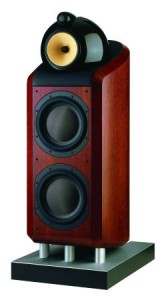A Brief History of…
Bowers & Wilkins

At Hifi Gear we are always pleased to be supporting many brands of all natures, price and nationalities. In fact, just for your benefit, we have decided to incorporate a new regular blog series of ‘A Brief History of’ onto our website.
A Brief History of will endeavour to explain how our favourite, and the rarities, have made their way from the early days, up until their products of today.
In the limelight today are Bowers and Wilkins. This brand has been one of the most celebrated manufacturers of all time, with many reports of how they are the worlds’ largest manufacturer of Home Cinema and Stereo Component speakers. They started their quest in 1966, the year of the World Cup victory of England, to manufacture speakers that were in a league of their own when compared to the opposition of the time. However, Bowers & Wilkins were thrown in the deep end as they were up against KEF and Wharfedale who had already established a superb knowledge of high-end speakers.
Bowers & Wilkins’ original head-man, John Bowers, had only been making speakers as hobby before he ventured into the industry by manufacturing B&W speakers in Worthing, Sussex. Up until then, Roy Wilkins and Bower had managed an electronics shop which specialised in rentals of equipment to consumers. When the did move into manufacturing, it all started out in the back-end of their shop which still exists thanks to Roy Willkin’s son, Paul. However, their manufacturing has only become bigger and better over the past decades to the scale that they are turning-out now.
B&W’s first speaker, the P1, originally consisted of Celestion components. Yet, by 1973, the firm attained the Queen’s Award for their deals in exportation and also started building monitors for the BBC – a thing that had been only done by KEF to this point. As time went on, B&W made enough money to start researching their own builds as they invested in measuring equipment. In 1977, the legendary DM7 featured a separately mounted tweeter. This meant that cross-talk and resonance in the same cabinets could be neutralised, giving greater performance at higher levels.
By the time the 1980s had arrived, Bowers handed the managing baton onto Robert Trunz who guided B&W through the decade. But, in 1987, John Bowers died. This meant that his job was then reassigned to John Dibb who continued designing speakers for B&W.
In the 1990s, serious efforts were made with the flagship Nautilus speaker of 1993. Still in production today, the tweeter system also features on today’s incredible PM1 speaker as well. As the 90s progressed, smoother designs were incorporated from the design team at B&W’s sister company, Blue Room Loudspeakers.
Up until today, B&W also concentrated on the iPod phenomenon; realising that a high-quality dock was needed in the Hi-Fi market to get the best sound out of what was around at the time. The end product guaranteed to be future-classic; it was the B&W Zeppelin. Today’s B&W still shares the same ideals as when they started back in 1966. However, the PM1, Zeppelin Air, P5 Headphones and 685 are only but a small amount of what the company has on offer today.
As ever, we at Hifi Gear, are thoroughly proud to demonstrate and deal in B&W’s newest releases. Click here for a link to the B&W section of our website.
Tom Parker,
Sales & Website Admin.